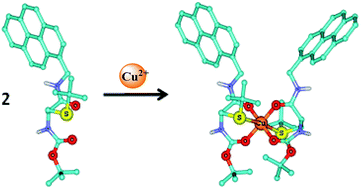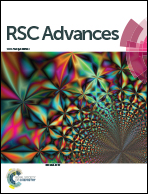Cysteine-based fluorescence “turn-on” sensors for Cu2+ and Ag+†
Abstract
We designed and synthesized two metal ion binding molecules 3a and 3b based on cysteine. In 3a, pyrene is used as a fluorescent probe, while 3b contains tryptophan, which acts as a fluorescent probe as well as facilitates metal ion binding. Detailed spectroscopic, calorimetric, microscopic and computational studies revealed the binding mode and the plausible structures of the complexes.


 Please wait while we load your content...
Please wait while we load your content...